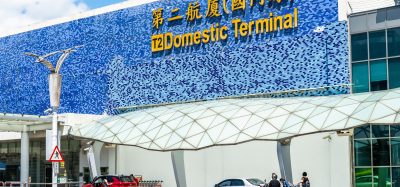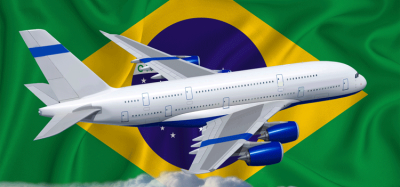IATA One ID: A deep dive into the interoperability challenge
- Like
- Digg
- Del
- Tumblr
- VKontakte
- Buffer
- Love This
- Odnoklassniki
- Meneame
- Blogger
- Amazon
- Yahoo Mail
- Gmail
- AOL
- Newsvine
- HackerNews
- Evernote
- MySpace
- Mail.ru
- Viadeo
- Line
- Comments
- Yummly
- SMS
- Viber
- Telegram
- Subscribe
- Skype
- Facebook Messenger
- Kakao
- LiveJournal
- Yammer
- Edgar
- Fintel
- Mix
- Instapaper
- Copy Link
Posted: 19 November 2020 | Kelly-Anne Frenette | No comments yet
On 25 November 2020, the International Air Transport Association’s (IATA) webinar, hosted by International Airport Review, will go through the main data privacy challenges and how they could be addressed within the One ID Ecosystem and supporting standards. Kelly-Anne Frenette, IATA’s Senior Manager of the Passenger Process for the One ID initiative, explains more.


The International Air Transport Association’s (IATA) webinar – IATA One ID: A deep dive into the interoperability challenge – will detail how challenges around data privacy are addressed within the One ID Ecosystem and supporting standards.
The webinar will answer questions such as:
- What is One ID doing to ensure privacy for passenger data?
- Will biometric and personal data be safe and secure?
- How can the passenger trust airlines, airports and governments to respect privacy regulations?
- What is a Privacy Impact Assessment (PIA)?
- What are Operational or Trust Frameworks and how do they relate to privacy?
Passenger data privacy is at the heart of One ID, with the need of passenger biographic and biometric data for passenger processing at the airport to enable biometric recognition and contactless processing in the passengers’ end-to-end travel journey.
The COVID-19 crisis has reinforced the significance of this industry goal, not only to help limit cross-contamination but to make travel and passenger data more secure.
IATA is dedicated to accelerating the harmonisation and interoperability of framework, processes, data models and data interchange through the development of One ID guidance, recommended practices and standards for the industry to adopt, implement and support.
The One ID project has made some progress toward this direction of interoperability and would like to share its vision of the One ID Ecosystem for the industry.
The focus is on ensuring the efficient exchange of information from passengers to airlines, airports and governments in the face of growing information requests. It could contribute to empower passengers with the capability to comply with additional requests by governments during times of emergency and leverage the opportunity to proactively communicate with passenger information about destination(s) and such requests. It could allow airlines to confirm that information has been provided. Additionally, it can assure that the passenger’s information collected and shared is authenticated where possible.
Project progress
A big part of the recent work has been defining the business requirements for One ID. Together with our wide range of stakeholders (airlines, airports, government representatives and service providers) and with specific international organisations (such as ACI or WTTC to name a few), we are defining such requirements, making sure they then can be applied across the travel continuum as a whole. What does that mean? It means, taking into consideration the various current existing models of biometric identity management and working on how they can be made interoperable to ultimately provide the passengers with a seamless experience.
As part of defining these business requirements, our working groups have been defining the whole One ID Ecosystem, describing the overall solution for creation of the trusted digital identity (capture and authentication) that can then be trusted by all, airlines, airports, border authorities and other stakeholders. Key to developing this One ID Ecosystem is understanding the different requirements and authorisations that apply for each stakeholder, for instance the specific government verification applied by individual border control authorities.
The focus is on ensuring the efficient exchange of information from passengers to airlines, airports and governments in the face of growing information requests
Another element is to define the exchange of the passenger data across the whole travel continuum, putting the passenger in the center and in control and respecting the principle of data minimisation. In a next phase we aim to leverage such passenger digital identity and provide the passengers with destination information and requirements (like travel authorisation, visa or health related requirements) and support them in collecting information that may be requested by States.
In parallel, IATA continues to work in close collaboration with ICAO in developing the specifications of the digitalisation of the ePassport (Digital Travel Credential) and how this is integrated and can support the whole One ID Ecosystem.
The One ID project has already delivered a significant number of guidance documents for the industry, in the areas of technology, trusted digital identity and authentication, the One ID process and also in the area of data privacy and protection. More is underway in the area of data privacy and protection, the aim of One ID is to ensure the exchange of passenger data is implemented with high standards of privacy so that passengers’ personal information is protected to a greater standard than current process, by using only the data that is necessary and authorised by a specific stakeholder, so we are building up various guidance accordingly.
The industry more than ever needs an accelerated adoption of biometric identity management solutions that will enable a contactless journey and contribute to a safer industry restart, so for the remainder of 2020, we are planning to increase our efforts to develop further guidance documents, to continuing supporting and ensuring harmonisation of a real seamless travel experience.
Register for IATA’s webinar here.



















